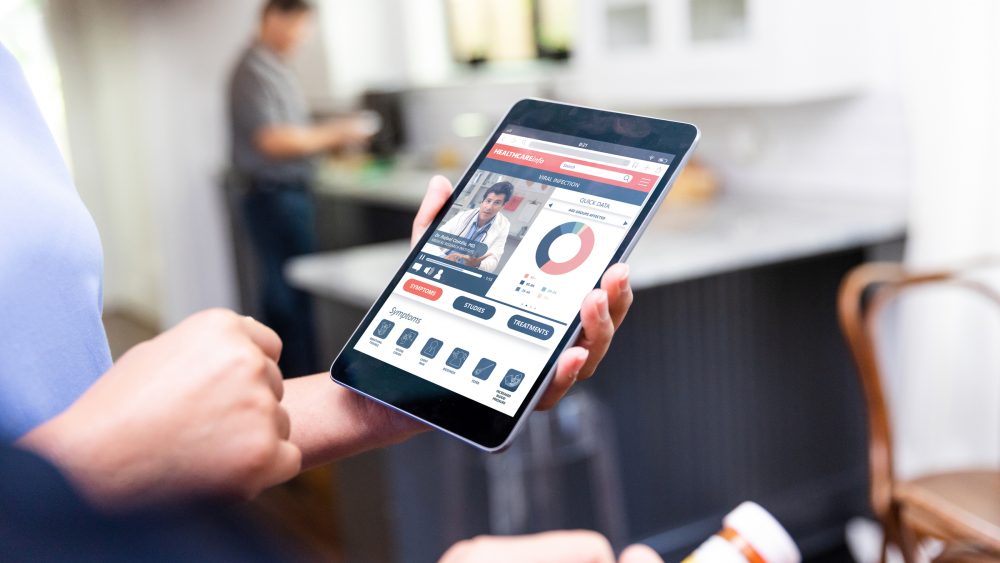VMware.com, 10.03.2022
Jens Koegler, Healthcare Industry Director, VMware EMEA

While much has been made of advancements in healthcare, most of the attention has been paid to the headline-making stuff like; early cancer detection and proposed cures for diseases like dementia and AIDS. There is much less fanfare about the foundational element enabling these discoveries – data.
It is turning hospitals into hives of technological excellence, which our report, ‘Data in the patient journey’ covers at length. But the route between data creation and clinical advancement is far from straightforward. While the right data, in the right hands at the right time can massively reduce the time spent on standard workflows, aid decision-making, and ultimately save lives, simply adding more data isn’t the answer. Doing so can swamp clinicians and have the opposite effect.
A global pilot for technology adoption
We’ve got to get the balance right between the adoption and integration of technologies such as artificial intelligence, machine learning, and IoT and the challenges they bring for the Health IT teams in getting them successfully implemented. The importance becomes even clearer when you keep in mind that many studies show that about 70% of all IT implementation projects fail. It’s something we’ve seen during the pandemic which became a global pilot for technology adoption in healthcare. Healthcare had no choice but to adopt remote working practices and virtual appointments, but this brought new challenges for IT teams to overcome in everything from training and access to securing data systems against cyberattacks.
To maintain the momentum of circumstance and provide long-term gains, we need a different approach to digital implementation. For evidence of this, look no further than the NHS which recently announced a move to accelerate digital transformation by merging the two bodies responsible for IT strategy (NHS Digital) and delivery (NHSX) into NHS England & NHS Improvement. To realise this vision, how data is captured, managed and used in the hospital environment will be fundamental.
Registration without repeats
One of the areas most ripe for change is perhaps the most basic – personal data entry. How many times are patients asked for the same information relating to name, DOB, address and ethnicity – all of which rarely changes? Add in the fact it is often done with pen and paper and it’s easy to spot an issue healthcare is making for itself. We’re now seeing hospitals offer online booking systems that enable registration from anywhere and recorded electronically from the start. Others offer self-registration terminals that use scanners to scan information from insurance cards or identification documents. Assuming the data is captured securely it is a small but significant development when it comes to the individual patient experience and the overall advancement of healthcare.
Another issue anybody that has been to a hospital will raise, particularly those to A&E, is patient flow. Long waiting times, appointment no-shows and delays need to be addressed. One option is a digital queuing system that offers patients an easy way of canceling ahead of time, that can inform them of their place in the queue or if there is an opportunity to bring an appointment forward. Some hospitals have already adopted this system and advanced it by introducing sophisticated data analysis tools that can determine the probabilities of a patient’s arrival to their scheduled examinations on time based on elements like traffic flow and weather. For example, Charité in Germany developed an app-like questionnaire on their website to provide responses to simple queries which was then shared freely with other local hospitals to help contain the spread of COVID-19. Patients suspected of being infected were able to electronically answer key qualification questions and were able to generate a QR code to go through the hospital registration process quickly and safely. The others were asked to stay at home or see their GP to avoid long queues at the emergency department or putting themselves at unnecessary risk.
Sharing is caring
One of the major issues in healthcare is how to make processes faster and easier for staff – advancements in technology have been a game-changer here. Where once each ward had one workstation that was wheeled around to each patient, now there are bedside devices that can show the latest series as well as personalised health data captured and delivered digitally. The ubiquitous use of smartphones means that some advanced hospitals now offer a BYOD option that is predicated on the patient simply downloading an app. Given the sensitivities involved in hospital data and potential infection, this is not yet a widespread move but AP/HP, the Paris University Hospitals, came up with a novel solution. To help patients to keep in touch with their loved ones who were kept away at the height of the pandemic, it issued patients hospital-owned devices during their stay, ensuring that data was wiped within minutes of discharge to align with GDPR.
Shared devices extend to the caregivers too. They need access to the right applications without having to use dozens of log on steps and different passwords to start work. These solutions need to be secure, simple and perfectly integrated into the clinical workflow. For instance, these days a nurse can simply go to an issuing station with a token or ID card and swipe it over an electronic scanner. In a matter of seconds, the device is fueled with the right applications and data needed to do the job. At the end of the shift, the device is returned to the collection station, the profile is deleted from the device and reset so that it can be available again for another employee.
Transformational impact of wearables
One development that has totally transformed the use of data within hospitals is wearables. According to this report, consumer wearable makers are expected to grow from around US$35 billion in 2020 to nearly US$115 billion by 2028. And we’re not just talking about the latest Apple watch. Wearable devices today can do everything from sense sleep and motion to insulin levels, alerting caregivers immediately if any action is required while aiding treatment and recovery in real-time – all in the comfort of their own home because the system works regardless of in-person observation.
This development also shows how important it will be to securely manage thousands of devices in a hospital. Unfortunately, many hospitals today are under financial pressure, so much of the IT budget often is spent on patching up current issues and maintaining legacy systems, rather than investing in and taking advantage of the cost and efficiency effects wearables can deliver. Which begs the question, ‘where next?’.
The consolidation of data
Exploiting the potential of cutting-edge applications in healthcare requires the consolidation of data. But this needs the acceptance and trust of the patients to willingly provide the data in the first place – the right conclusions can only be drawn if the data set is sufficiently large. We must avoid losing data sovereignty over patient data at all costs, an issue GAIA-X is designed to address. More than 20% of the use cases that have already been published from this initiative come from the healthcare sector, which demonstrates how great the need is to securely network patient data across different systems to provide better care. But, by taking the lessons learned from the pandemic to speed up digital collaboration and to commission technology as part of a complete operating model, not as an addition to an existing model, we can truly make a difference.
You can download our report here or, for more information on how VMware can help you capitalise on data in the patient journey, please contact us at vmcare@vmware.com
Social Kit

Source:
Posted on 10/03/2022 by VMware EMEA








